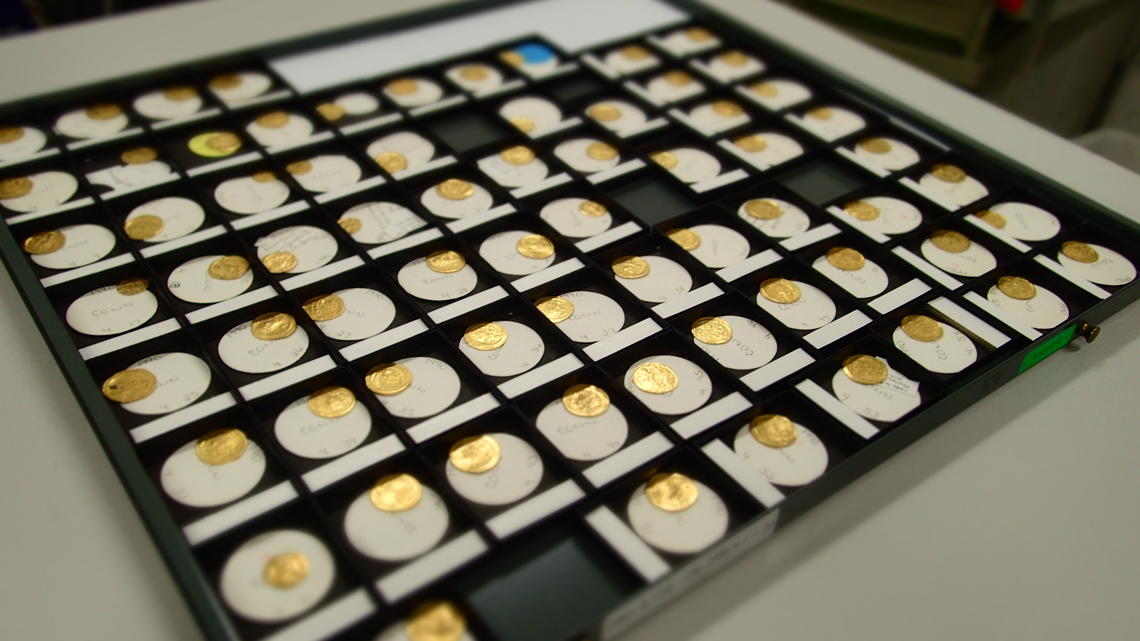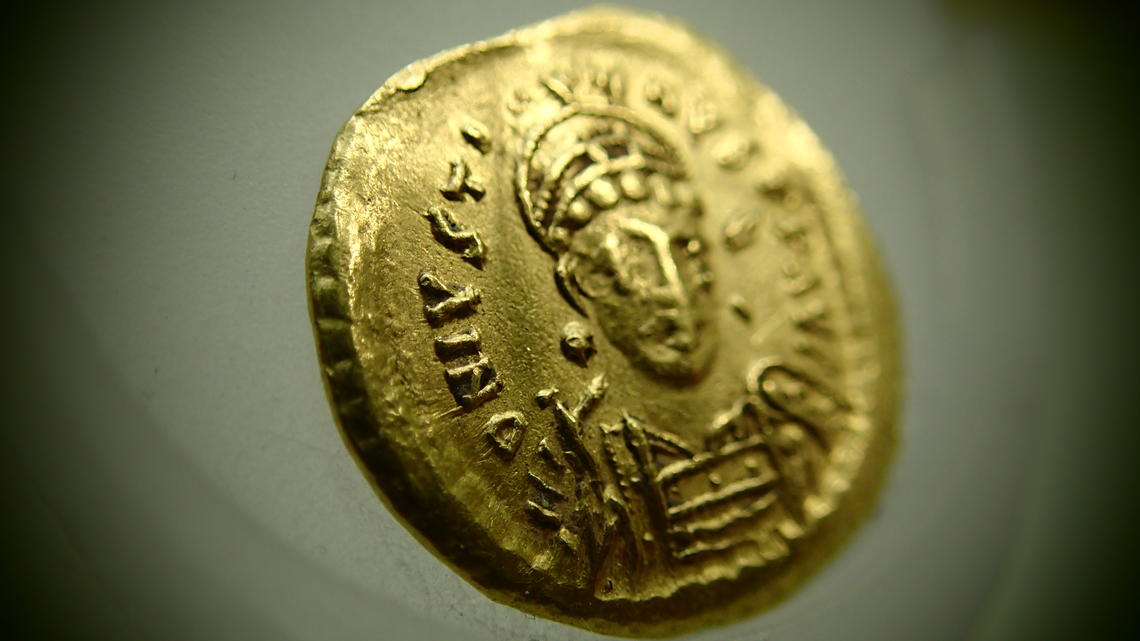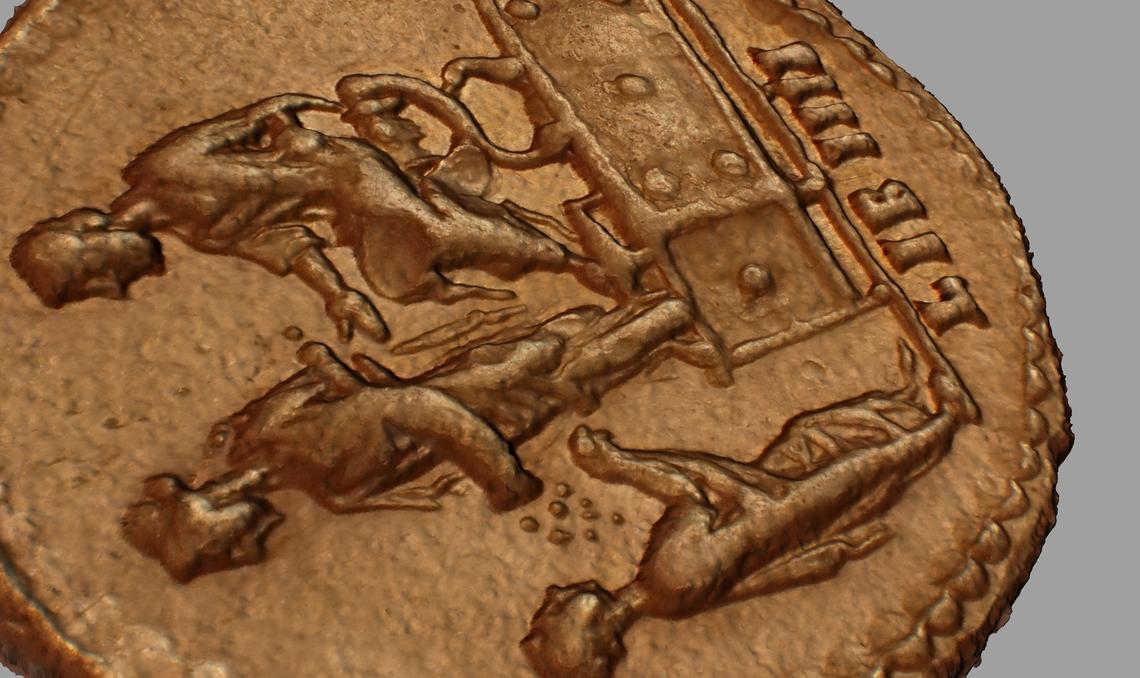
Nov. 19, 2021
When historical artifacts and modern technology collide
Cryptocurrencies are attracting a lot of attention these days, but Scott Coleman prefers to focus on money — the physical kind — from the distant past. Graduating with a master’s degree in Greek and Roman Studies, he has a fascination with coins from the Roman and Byzantine Empires.
“Numismatics can provide a link between the modern world and the past,” explains Coleman. “Money, specifically coins, are tangible and tactile material culture that all humankind can relate to and share as a common cultural heritage.”

Nickle Galleries
Scott Coleman
After completing his BA in history at Memorial University, Coleman moved west to study with Dr. Marica Cassis, PhD, associate professor and head of the Department of Classics and Religion. He soon discovered the treasure trove awaiting him at the University of Calgary, housed in Nickle Galleries: the Nickle Numismatic Collection, one of the most historically significant collections of coins and paper money in Canada. It includes 150 gold and bronze coins that circulated more than 1,000 years ago across the Byzantine Empire’s territories which included the Balkans, Asia Minor, parts of the Middle East and North Africa.
In the summer of 2020, Coleman was scheduled to conduct field work in Greece, but the COVID-19 pandemic postponed his travel plans. That twist of fate affected his work in an intriguing, positive way. The lockdown forced him to think about how to broaden access to museum artifacts and changed the course of his research.

Gold Solidus of Emperor Justin I, 518-527 CE, Byzantine Empire. NG. 1990.4.18. Nickle Galleries.
Scott Coleman
“With museums and galleries closed, it meant many artifacts were inaccessible to the public,” he explains. “I started looking at how museums represent coins and I focused within Greece, given that was the region I was preparing to study for my practicum.”
Throughout his research, Coleman delved deep into the Nickle Numismatic Collection, working closely with collections specialist Marina Fischer. Inspired by the use of 3D technology for mapping ancient sites, Coleman realized that creating digital images of the coins would make them more accessible for researchers and the public. He began collaborating with technology specialist Jed Baker in Libraries and Cultural Resources, experimenting with photogrammetry to create 3D images of rare coins.

Silver Denarius of Empress Faustina the Elder, 141-161 CE, Roman Empire. NG.1990.3.79. Nickle Galleries.
Scott Coleman
“If you digitize them and create these 3D images, then everyone has access to these coins by exploring them online. They don’t have to be in a museum display in a 2D format where you only see one side of them. It’s a great way to start presenting coins to everybody, and it’s a great way for people to interact with coins.”
A continuation of this work could include augmented reality, in which a 3D image is manipulated to more easily study the detailed markings and stunning artwork found on many rare coins. Coleman points to an example of this approach that resulted from a project at the Sarajevo Museum.
“Engaging with collections in this way not only broadens access to historical artifacts but it helps generate interest and attract future researchers to this field of study,” says Coleman. “This really is the future of research: the merging of physical collections with technology. The digital humanities are really pushing the boundaries of what’s possible.”

Gold Aureus of Emperor Antoninus Pius, 138-161, Roman Empire. NG. 1991.1.18 Nickle Galleries.
Jed Baker
Coleman’s time as a grad student at UCalgary led to several memorable experiences. In 2019, he co-curated the Nickle Galleries exhibition Money and Calgary: The City’s History of Numismatics. Last winter, Coleman shared his practicum experience during the Nickle at Noon presentation Piecing Together Roman and Byzantine Identity and for the Calgary Public Library’s Ancient World Series titled Byzantine Identity in a Pluralist Society.
Coleman is now pursuing a PhD in public history at Carleton University and will continue to work with Marina Fischer and the Nickle Numismatic Collection, which will play an important part of his doctoral research.




